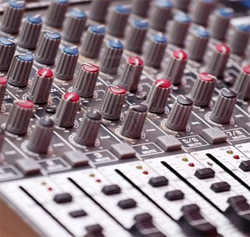Almost weekly, I receive an e-mail asking for advice on which mixer to buy.
The answer, of course, is always the same; it depends. No seriously, that’s the answer. Because there is no “one” right mixer for every church.
There are quite a few that hit a sweet spot in terms of a performance/value ratio, but even those are not right for every situation. So what I thought I’d do is walk through a process that I use when spec’ing out a new mixer for a church.
Keep in mind that every single gear purchase is a compromise. What we try to achieve is the best compromise for the situation, with some room to grow.
So with that in mind, here we go.
Primary Objective Of Upgrade
It may seem obvious, but a lot of churches are “convinced” they need a new mixer, but can’t articulate why. “Ours is old and it’s not doing the job,” is not sufficient. What part of the job is it not doing? Does it lack inputs? Is it noisy? Do some of the faders not work? Too few outputs? Too big? Don’t like the color scheme?
Seriously, we need to consider what we are trying to fix before we can find a suitable replacement. And sometimes it really makes more sense to replace a few faders than it does to buy a new desk. Keep that in mind. But once we know what we don’t like about the old one, we can decide what features and what kind of performance we need from the new one.
Input Count
You might think that the digital/analog question might be first, but I prefer to save that for later. First we need to determine how many inputs are currently used, what the short term (ie. 2-3 years) growth plans are and then figure in some cushion. I like to start with this question because if a church only uses 3 microphones and a CD player each week, a (Yamaha) PM5D is probably not the best choice, even if they can afford it. Nor is an M7.
It’s important to note the number of mic inputs and line inputs. You also want to consider how many inputs you would like to be able use if you had them available. For example, if your current 16 channel mixer is full, consider what you would like to be able to do right now before you run out and buy a 24 channel. You may find that one full sooner than you expected.
I always advise churches to count up their maximum ideal channels for weekly services (once or twice a year events are another matter), then add 8 channels to that. Start looking at consoles with that channel count at a minimum. If you end up with 30 as your ideal number (current use, planned upgrades plus 8 spares), you may find that going for a 40 channel board isn’t that much more, and might make sense. On the other hand, 32 might well be sufficient. Think it through.





















